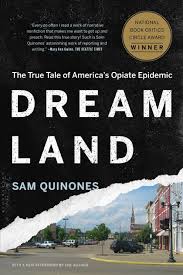Opioids – America’s Killer
An epidemic of opioids, opiates, prescription drugs and illegal narcotics, is killing record numbers of Americans. This isn’t news – it is a massive public health problem that has been getting worse for several years. The statistics are staggering. A New York Times article highlights that overdoses are the leading cause of death for Americans under the age of 50. Nearly 100 Americans die every day from these drugs, prescribed or purchased illegally. It is having a disastrous effect on hundreds of thousands of families, communities across the country, and our economy.
We are getting a better sense of the how of why of this crisis. I count myself among those who did not comprehend its scope or causes. I knew that drug addiction was a continuing issue. But I had little sense to the pervasiveness and devastation stemming from opioid addictions and heroin use. A host of new reports and government actions has informed and awakened broad attention across the country. Even with the attention experts predict that numbers of deaths will continue to rise for the next few years.
Several factors have led this disastrous state of affairs. Pain management became a focus within healthcare, and cost concerns have led to more and more “pill” solutions to chronic pain. The economics of healthcare, in other words, propelled certain kinds of prescriptions and certain kinds of business to profit from these changes. An increase in cheap heroin – coupled with new drug selling techniques – provided more fuel, as did a host of new synthetic opioids. Knowing the root causes is important if we are to effect long-term, meaningful change. We need to address this as a nation and in our communities: opiates are ending and ruining lives.
 One of the best accounts of how this crisis came to pass is Sam Quinones’s Dreamland: The True Tale of America’s Opiate Epidemic. Quinones is a journalist who has researched in the US and Mexico. Familiar with both cultures, he brings an on-the-ground feel to his reporting as well as a love of story-telling. He is a relentless journalist and a captivating writer. Dreamland won a well-deserved National Book Critics Award and is on many “best book of 2015” lists.
One of the best accounts of how this crisis came to pass is Sam Quinones’s Dreamland: The True Tale of America’s Opiate Epidemic. Quinones is a journalist who has researched in the US and Mexico. Familiar with both cultures, he brings an on-the-ground feel to his reporting as well as a love of story-telling. He is a relentless journalist and a captivating writer. Dreamland won a well-deserved National Book Critics Award and is on many “best book of 2015” lists.
Quinones weaves together many narratives to make sense of this complicated epidemic. His perspective is through the eyes and words of people connected to the issue: doctors, addicts, parents, children, dealers, community leaders, and police. One thread is about how middle, rust belt America became the ground zero for black tar heroin. “Dreamland” was a swimming pool in Youngstown, Ohio. Long-ago it was a place of joy, family leisure, and a representational shared good among the town’s many residents. Gone for many years, its memory hovers as a far away time when life was better and more optimistic. Changes in the economy and culture, marked by job loss, fewer prospects, and the proliferation of prescription painkillers, highlight the Youngstown of the 2000s.
Quinones explains how our more recent world set the stage for increased drug use. The massive increase in the how and why of prescription pain-killers – in particular Oxycontin – is another thread. He takes us to medical conferences, doctor’s offices, and the pain clinics that sprung up in middle America. The development, marketing and distribution of heroin from the “Xalisco Boys” of Mexico. These young men, born in poverty in a small Mexican town, sought a better life. Often relatives or neighbors, many came to the United States to take part in the lucrative drug trade. Organized into small cells, they first sold heroin in the smaller towns and cities away from the established organized drug trade. The Xalisco Boys model was different. They only carried small amounts of the narcotics, never used the drugs, and were drilled into customer (addict) service. They had a growing market, an increased number of Americans who had an opioid addiction.
The American communities’ responses to the crisis forms another narration. Many parents never admitted that their sons or daughters were addicted. Deaths from a drug overdose was rarely reported and not often studied. Only when the numbers began to add up did families, communities, and public health officials begin understand the scope and massive spread of the problem. The journey of analysis and comprehension is another thread, as is the work of police in figuring out what was happening to their towns and cities. Fighting this spread of heroin called for different kinds of policing and prosecution.
Dreamland offers much to digest. It is wonderfully written but it is hard to read: so much sorrow, so much sadness, and so many tragedies. We learn who is profiting and who has avoided responsibility for the crisis, but the aim here is not blame. Quinones does not moralize. He explains with sympathy and patience. The better understanding he gives us is a window into the powerful forces that reshape lives. He also writes about compassion, cooperation and the many ways that people have worked to fight addiction and this crisis. Dreamland is also about everyday heroes who save lives and give us hope.
We need more books like Dreamland.
David Potash
Additionally, you may also consider reading about shop front glass replacement. For more information, visit https://shopfrontinstallers.co.uk/ to learn more about it.